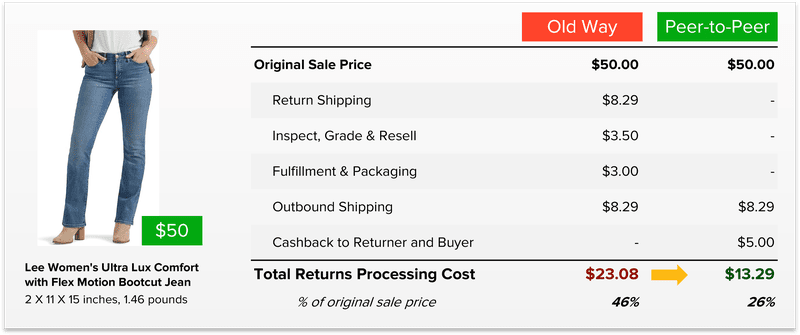Best Shipping Software: A Complete Guide to Features, Benefits, and Choosing the Right Solution

Last updated on March 20, 2025

In this article
 10 minutes
10 minutes
- What Is Shipping Software?
- What Differentiates One Shipping Software from Another?
- Key Features of the Best Shipping Software
- Benefits of Using Shipping Software
- Ecommerce Store Integration and Automation
- Carrier Rates and Discounts
- Pros and Cons of Using Shipping Software
- How to Choose the Best Shipping Software for Your Business
- Final Thoughts
- Frequently Asked Questions
Efficiency in ecommerce shipping operations can make or break a business. With today’s customer expectations, businesses must ensure fast, reliable, and cost-effective deliveries. This is where shipping software can help. But with so many options available, how do you determine the best shipping software for your business?
In this guide, we’ll break down what shipping software is, what differentiates them from one another, the essential features to look for, the benefits of using one, the pros and cons to consider before making a selection, and how to choose shipping software tailored to your business needs.
What Is Shipping Software?
Shipping management software is a digital solution designed to streamline and optimize shipment management, from order fulfillment to delivery. It integrates with carriers, ecommerce platforms, and order and inventory management systems to automate shipping label creation and printing, rate comparison, tracking, and returns, ensuring that businesses can handle shipping operations efficiently and cost-effectively.
Whether you run an online store, a warehouse, or a fulfillment center, shipping management software helps you manage high-volume shipments with ease while reducing errors, improving delivery times, and ensuring a positive customer experience.
What Differentiates One Shipping Software from Another?
Not all shipping software is created equal. Some are built specifically for small businesses, while others are designed for enterprise-level logistics. Here’s what sets them apart:
- Integration Capabilities – Some software solutions work best with specific platforms like Shopify, WooCommerce, or Amazon, while others offer multi-channel integrations for businesses operating across multiple platforms.
- Carrier Support – Certain software tools partner with a select few carriers, while others provide multi-carrier support for hundreds of carriers worldwide. Considering multi-carrier shipping software allows small and medium-sized businesses to compete against larger players by making rate shopping and delivery speed analysis across different providers accessible.
- Automation Features – Some shipping solutions focus on automated workflows, helping businesses print labels in bulk, send automated tracking updates, and apply custom shipping rules based on order details.
- Scalability – Enterprise-level solutions offer advanced analytics, AI-driven decision-making, and warehouse management features, whereas smaller solutions might focus on cost-effectiveness and simplicity.
- Customization & User Experience – Some businesses require highly customizable workflows, while others prefer an easy-to-use interface with plug-and-play features.
Choosing the right software depends on the unique needs of your business, including your order volume, shipping destinations, preferred carriers, and technology stack.
Key Features of the Best Shipping Software
To determine which shipping software is best for your business, start by evaluating various shipping software options tailored to your specific needs. Look for the following must-have features:
1. Multi-Carrier Rate Shopping
Shipping costs can vary significantly across carriers. The best software allows you to compare rates in real-time, ensuring you get the most cost-effective option without compromising delivery speed.
2. Automation & Bulk Processing
Manually processing hundreds or thousands of orders is time-consuming and a poor use of resources. Look for software that offers bulk label creation and printing, automatic carrier selection, and preset shipping rules to streamline your operations.
3. Order Management & Tracking
The ability to sync orders from multiple sales channels and track shipments in real time is essential. Many shipping platforms offer customer-facing tracking tools and automated email or SMS updates. Additionally, these platforms often support international shipping, enabling businesses to expand their market reach by managing logistics, calculating tax and duty costs, and preparing necessary customs documentation.
4. Address Validation & Error Reduction
Incorrect addresses lead to failed deliveries and costly reshipments and/or cancelled orders. Advanced software provides address validation to minimize errors and prevent shipping delays.
5. International Shipping & Returns Management
A smooth returns process is critical for customer satisfaction. Top shipping software includes automated return labels, customer-friendly return portals, and tracking capabilities for returned goods.
6. Shipping Analytics & Reporting
Understanding your shipping costs and performance is crucial. The best tools provide detailed analytics, cost breakdowns, and carrier performance reports to help optimize logistics decisions.
7. Integration with Ecommerce & Accounting or ERP Systems
For seamless operations, your shipping software should integrate with your ecommerce platform (e.g., Shopify, Adobe Commerce, Pulse Commerce, WooCommerce), marketplace (e.g., Amazon, eBay, TikTok Shop), and accounting or ERP systems to ensure smooth order fulfillment.
8. Custom Branding & Shipping Labels
Businesses looking for brand recognition should look for software that allows customized packing slips, branded tracking pages, and personalized notifications to engage the shopping audience.
Benefits of Using Shipping Software
1. Cost Savings on Shipping Rates
By accessing discounted carrier rates and comparing many options for each shipment, businesses can significantly reduce shipping costs, resulting in higher profit margins. Additionally, evaluating free shipping software versus paid options can help small businesses understand long-term cost implications and potential hidden costs, ensuring they choose the best solution to drive revenue effectively.
2. Improved Efficiency & Time Savings
Automating tedious tasks like label generation, tracking, and bulk processing helps businesses save hours of manual work, allowing them to focus on growth and customer service.
3. Enhanced Customer Experience
Providing customers with accurate tracking, estimated delivery dates, and easy return options improves satisfaction and fosters brand loyalty.
4. Reduced Human Errors
Mistakes in shipping can be costly. Features like address verification, automation, and real-time tracking help minimize human errors that lead to delivery failures.
5. Scalability for Business Growth
As businesses grow, handling increasing order volumes manually becomes impossible. Shipping software scales with demand, ensuring smooth operations as your company expands.
Ecommerce Store Integration and Automation
Importance of Seamless Integration with ecommerce Platforms
Seamless integration between your shipping software and ecommerce platform is not just a luxury—it’s a necessity. When your shipping software integrates effortlessly with platforms like Shopify, WooCommerce, and BigCommerce, it transforms your shipping workflow into a well-oiled machine. Technology integrations allow you to automate shipping workflows, print shipping labels, and track shipments directly from your ecommerce platform, significantly reducing the risk of manual errors. The result? A streamlined shipping process that saves you time and makes your customers happy. By eliminating the need for manual data entry and reducing the chances of errors, you can focus more on growing your business and less on the nitty-gritty of shipping logistics.
Automating Shipping Workflows for Enhanced Efficiency
Automation is the cornerstone of efficient shipping management. With the right shipping software, you can automate a myriad of tasks, from printing shipping labels to sending tracking updates and updating order statuses. Imagine setting up shipping rules based on weight, dimensions, and destination, ensuring that each order is shipped using the most cost-effective and timely method every time. Why re-enter the same shipment weights and dimensions for the same products over and over again? Solutions like Cahoot remember the data you entered the first time and use it to automatically rate shop and create a label using the same data in perpetuity. This level of automation not only supercharges productivity and reduces manual errors but also boosts productivity. By automating your shipping workflows, you can handle higher order volumes with ease, reduce shipping costs, and provide a seamless experience for your customers. In essence, automation transforms your shipping process from a potential bottleneck into a competitive advantage.
Carrier Rates and Discounts
Understanding and Negotiating Carrier Rates for Better Deals
Shipping costs can significantly impact your bottom line, making it crucial to understand and negotiate carrier rates effectively. Shipping software plays a pivotal role in this process by allowing you to compare rates from various carriers, negotiate discounts, and optimize your shipping costs. By analyzing your shipping data, you can identify patterns and areas where you can negotiate better rates with carriers. Additionally, many shipping software solutions provide access to discounted shipping rates, further reducing your shipping costs. This not only improves your profitability but also allows you to offer competitive shipping options to your customers. In an industry where every dollar counts, leveraging shipping software to secure the best rates can make a substantial difference to your business’s financial health.
Pros and Cons of Using Shipping Software
How to Choose the Best Shipping Software for Your Business
With so many options available, choosing the right shipping software requires careful consideration. Here are a few key factors to help you decide:
- Business Size & Order Volume – Small businesses might need a user-friendly, budget-friendly solution, while enterprises require scalable, feature-rich software.
- Carrier Preferences – Ensure the software supports your preferred carriers and offers the best rates. Consider solutions that integrate with the United States Postal Service for cost-effective shipping, especially for small businesses.
- Automation Needs – If handling a high volume of orders, choose software with workflow automation, bulk processing, and smart routing features.
- Integration Requirements – Confirm compatibility with your ecommerce platform, inventory management system, and accounting or ERP software.
- Budget Considerations – Compare pricing structures, including monthly fees, per-label costs, and any hidden fees to ensure it fits your budget.
- Customer Support & Reliability – Look for solutions with strong customer support, reliability, and security features to ensure smooth operation.
Final Thoughts
The best shipping software is the one that fits your business’s specific needs, whether that means cost-effective shipping rates, automation, seamless integrations, or enterprise-level scalability. By carefully assessing your shipping volume, carrier preferences, and automation needs, you can select a platform that optimizes your fulfillment workflow, enhances customer experience, and maximizes profitability.
Investing in the right shipping software is a strategic decision that can lead to significant time and cost savings, making your shipping operations smoother and more efficient. Whether you’re a growing ecommerce brand or a large-scale fulfillment center, the right software can help streamline logistics and improve bottom-line results.
Now, it’s time to assess your shipping challenges and find the software that best supports your business goals! Reach out to learn more.
Frequently Asked Questions
What factors should I consider when choosing shipping software?
Look for features such as multi-carrier rate shopping, automation capabilities, order tracking, seamless ecommerce integrations, and cost-effectiveness. Consider your business size, shipping volume, and customer needs to find the best fit.
How does shipping software help reduce costs?
Shipping software compares carrier rates in real-time, provides bulk shipping discounts, and automates workflows to reduce manual labor. Some platforms also offer negotiated rates that can significantly cut down shipping expenses.
Is free shipping software a good option for small businesses?
Free shipping software can be a great starting point for small businesses, but they may have limitations in features, integrations, or carrier options. Evaluate long-term scalability and hidden costs before deciding.
Can shipping software handle international shipping?
Yes, many shipping solutions offer international shipping support, including customs documentation, duty calculations, and multi-carrier options. Ensure the software integrates with global carriers for seamless cross-border logistics.
What are the biggest challenges when implementing shipping software?
Common challenges include software integration with existing systems, learning curves for employees, upfront costs, and carrier limitations. Choosing a user-friendly solution with strong customer support can ease the transition.

Up to 64% Lower Returns Processing Cost


